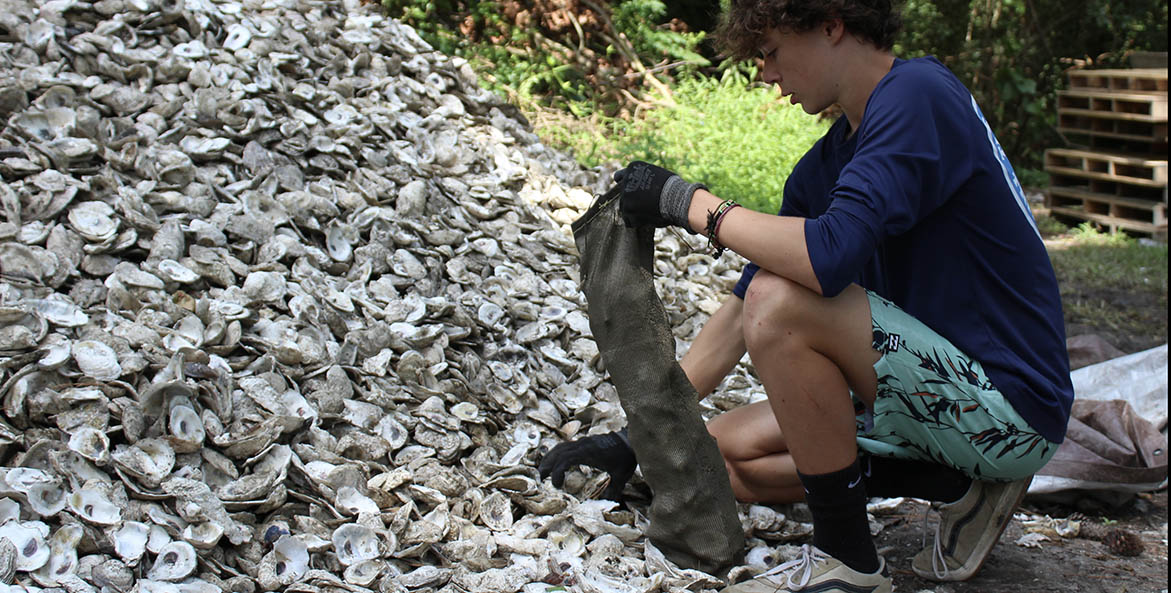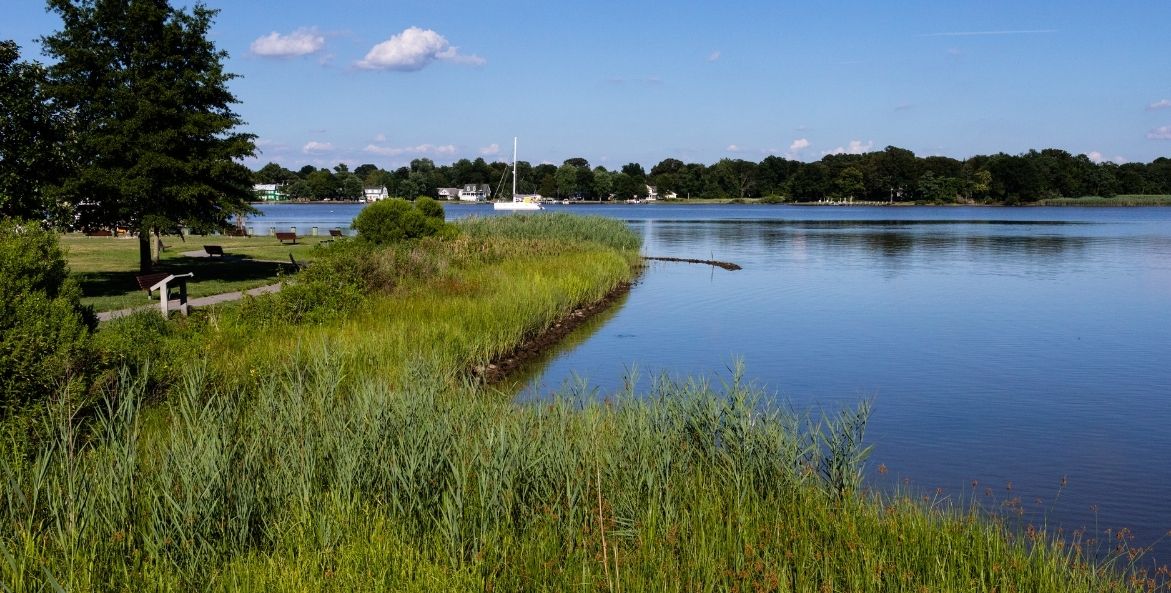In 2023, dozens of watershed scientists wrote a joint report assessing the challenges facing the Chesapeake Bay cleanup effort and how to accelerate progress. One of their findings? Living shorelines and other restoration efforts that focus on shallow-water areas are key to moving Bay restoration forward.
What’s more, in the age of climate change, living shorelines are a creative and proven approach to protecting tidal shorelines from erosion and sea level rise. They consist of planting native wetland plants and grasses, shrubs, and trees at various points along the tidal water line. Plantings are often coupled with carefully placed bioengineering materials, such as man-made coconut fiber rolls (also called biologs) to protect vegetation and soil. Where viable, oysters can be included, as well as stone elements as long as they do not cut off access to the shore.
CBF has worked with homeowners and partners across the watershed to install living shorelines and highlight their benefits. As we continue these efforts, we’re featuring a few things you may not know about living shorelines:
1. They are good for water quality.
The ability of living shorelines to remove nitrogen improves water quality and reduces the likelihood of excessive algal growth that can harm human health and aquatic life.
2. They provide habitat for wildlife both in and out of the water.
Living shorelines provide shoreline access to wildlife, such as nesting turtles, horseshoe crabs, and shorebirds. Additionally, they provide shallow water habitat and a diversity of plant species for aquatic and terrestrial animals.
The abundance of crabs, bivalves like clams and oysters, and many fish species decline as the amount of hardened shoreline increases. Hardened shorelines also show significantly less spawning by Atlantic silversides, an important small fish that many larger fish rely on for food.

Volunteer Austin Sadler fills new basalt shell bag prototype with loose oyster shell to be used on the Berner Living Shoreline.
Ryan Westpfahl
3. They are adaptable, long-term solutions to combat erosion and sea level rise.
A living shoreline, at the design's core, is an erosion prevention tactic that has the ability to adapt to changing water levels and increased storm activity resulting from climate change. This is critical in today's climate environment, where more intense storms and record rainfalls are resulting in increased soil erosion, flooding, and polluted runoff.
Hardened structures, in the short term, are an effective method of shoreline stabilization, but they cannot adapt to a changing environment and eradicate the intertidal zone, a crucial alternating wet and dry environment for many Bay species as well as a safe place for humans to enjoy wading and swimming. In addition, it has been proven time and time again that they eventually fail. With increased storm activity and sea-level rise, the life spans of hardened structures will become even shorter.
4. They are aesthetically pleasing and less costly than man-made and artificial alternatives.
Unlike wooden bulkheads and stone riprap, living shorelines look natural rather than man-made and artificial. Additionally, they are often less costly than wooden bulkheads and rock walls (also known as “revetments”).
Data collected after Hurricanes Irene (2011) and Arthur (2014) show that property owners with bulkheads reported double the price to repair hurricane damage to their property and four times the cost for annual shoreline maintenance compared to property owners with living shorelines.
5. They absorb wave energy.
Living shorelines absorb wave energy so that reflected waves do not scour the shallow sub-tidal zone and hamper growth of underwater grasses. Underwater Bay grasses (also known as submerged aquatic vegetation or SAV) are plant communities that provide food and shelter for waterfowl, fish, shellfish, and invertebrates. Aquatic creatures like shrimp and crabs use Bay grass beds and shallow shorelines as nursery areas and for refuge. These areas also support microscopic plants that are a source of food for crabs and fish.
Living shorelines have multiple benefits and vary from site to site. Learn more about how to install a living shoreline on your property here.




